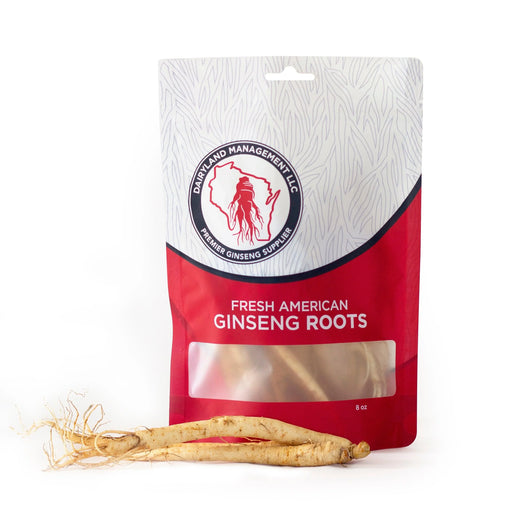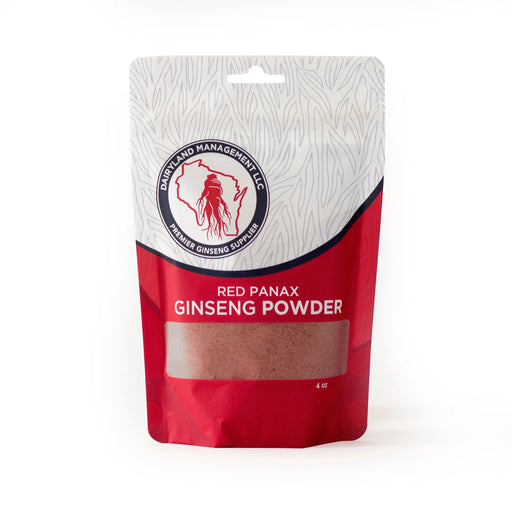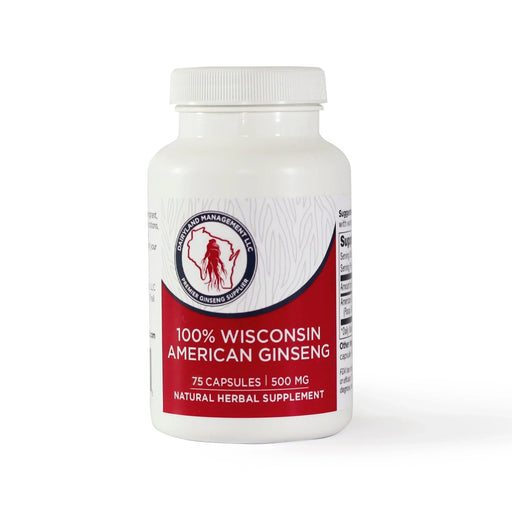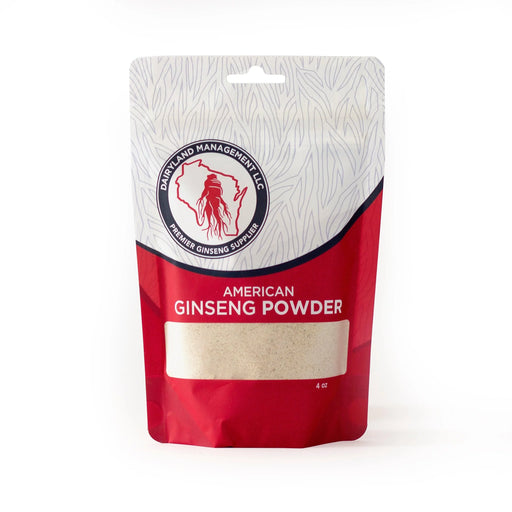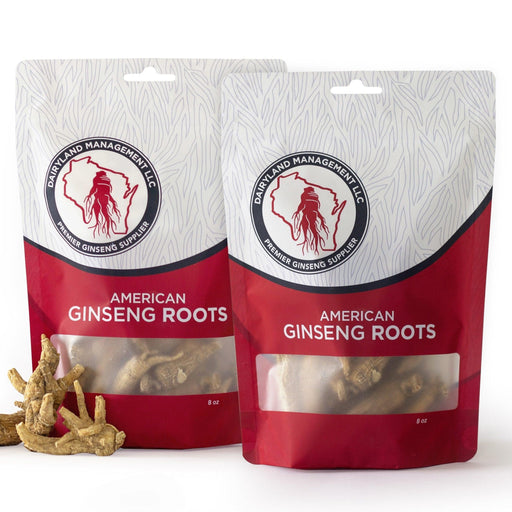Growing Ginseng
By Lleweln Williams
American ginseng (Panax quinquefolius) is a fleshy-rooted herb native to cool and shady hardwood forests from Quebec and Manitoba south to northern Florida, Alabama, Louisiana, and Arkansas. Wild american ginseng has been harvested for many years and is cultivated commercially for its root, both in its natural range and in the Pacific Northwest.

American ginseng shows variations in characteristics, particularly in the roots. Western types usually have long, thin roots of undesirable qualities. Plants from the northern part of the country, particularly Wisconsin and New York, are the most desirable for export, furnishing roots of good size, weight, and shape, and are generally considered the best breeding stock. Cultivated roots usually are heavier and more uniform than wild roots, although they command a lower price in the market.
Ginseng is valued by some Chinese and Koreans, who believe the dried roots have stimulant properties. (There is, however, no scientific evidence to support that belief.) The market value of the cured root is based on color, maturity, size, and form.
Description of American Ginseng
Ginseng grows about 1 foot tall. Leaves of mature plants usually consist of five ovate leaflets. It blooms in midsummer; the flowers are greenish yellow, borne in clusters. The fruit is a bright crimson berry, containing one to three wrinkled seeds the size of small peas. Mature root is spindle shaped, 2 to 4 inches long, and up to 1 inch thick. In plants upwards of 5 years old, the root is usually forked, with prominent circular wrinkles. Roots reach marketable size when 5 to 7 years old. They are dug, carefully washed to remove adhering soil, and dried. Only whole roots are acceptable in the trade.
Best quality root of proper age breaks with a somewhat soft and waxy fracture. Young or undersized roots dry hard and glassy and are less marketable.
PLANT MATERIALS
Ginseng is grown from seeds, seedlings, or roots. Plants free from blight or mildew and growing spontaneously in woodland may be transplanted to prepared beds. Ginseng requires 5 to 7 years to mature from seed. By planting separate beds of seeds, 1-, 2-, and 3-year-old seedlings, and roots, the first crop can be scheduled in 3 or 4 years after planting. Each year after the first harvest, another crop will come to maturity.
Seeds
Only stratified or partially germinated seeds should be used for planting. They are planted 8 inches apart each way in permanent beds, or 2 by 6 inches apart in seedbeds. Cover seeds with 1 inch of forest soil, or well-rotted hickory or basswood sawdust; do not use pine or oak sawdust.
Seeds ripen in the fall, but generally do not germinate until the foilowing fall. Do not allow ripe seeds to dry out. Store them in a cool, moist place. Use woodland soil, sand, loam, or sawdust as a storage medium.
Use of seeds instead of seedlings may prevent the introduction of disease to new plantations. Also, this is the least expensive way to start a plantation, but requires a longer period until harvest.
Some growers plant the seeds when they ripen in September, and cover the beds with leaf mold or mulch. They keep the beds covered until spring, when the seeds begin to sprout.
|
Important – Please read Dairyland Management ginseng seeds arrive September to November already stratified in preparation for germination. Some may arrive already beginning to sprout. They should not be allowed to dry. For best results they should be planted as soon as possible after arrival. If immediate planting is not possible, remove the seeds from their container or packet and store in moist sand or vermiculite in an open container placed in a cool location (5° C. 40° F.). This is necessary to allow the seeds to breathe. Seeds may be stored until the spring this way but germination will not be as good. Ginseng seed may be planted anytime in the fall until the ground freezes too hard to work. |
Seedlings
Ginseng seedlings are more expensive than seeds, but a crop grown from seedlings can be harvested 2 or 3 years sooner than a crop propagated from seeds. Several firms sell 1-, 2-, or 3-year-old seedlings. Three-year-old seedlings produce seed during the first faIl after planting, which may be used for planting future crops. Set seedlings in permanent beds, 8 inches apart each way. Closer spacing tends to increase disease in the plantation.
Roots
Roots may be set any time from October to April, after soil has been tilled. Fall planting, however, is usually preferred. Plant roots 2 inches below the bed surface, and 8 inches apart each way. When roots are not available in woodland, beginners should purchase them from reputable growers. Roots grow more rapidly when not permitted to seed.
CULTURE
Ginseng may be grown directly in woodlots or in lath sheds with partial shade – an environment similar to the plant’s natural habitat. Plants thrive best in loamy soil, such as found in oak and sugar maple forests in the North. Shade is essential.
Soil
Ginseng grows naturally on slopes of ravines and in well-drained sites where soil is formed from acid leaf mold of hardwood forests. The soil should be naturally dry and fairly light, and in condition to grow good vegetables without the addition of strong manure. By proper treatment almost any fairly good soil can be conditioned for ginseng growing. The addition of woodland soil gives best results. Very sandy soil tends to produce hard, flinty roots of inferior quality.
For seedbeds, break up soil to a depth of 6 to 8 inches, and remove all weeds, grasscs, and roots. Mix 1-to-1 with fiber-free woodland soil. If thc soil is inclined to be heavy, add enough sand so that mixture will not hardcn after heavy rain.
Beds
Selection of proper location, preparation of soil, and good drainage are important in planting ginseng. The best site for beds is a hardwood forest, with tall trees to provide reasonably dense shade, and with little undergrowth. Similar drainage and shade conditions should be maintained when growing ginseng in lath sheds.
Make beds 4 feet wide with walkways between them. For root planting, work the beds up to 12 inches deep. For seeds and seedlings, work the bcds only 8 inches or so deep to prevent settling. Mound the center of permanent planting beds to provide space for more plants and, if located on flat ground, to facilitate good runoff of water. Slope the walkways so that they will drain water from the beds during heavy rains.
Shade
Ginseng needs three-fourths shade during the summer, and free circulation of air. The proper amount of shade can be provided in lath sheds or by trees in a forest planting.
Laths should run north to south to provide alternating sun and shade to the plants. Do not use burlap or muslin: they interfere with air circulation.
Cultivation
Ginseng requires relatively little cultivation. The beds should be kept free of grass and weeds, and the soil should be scratched with a light implement whenever it shows signs of caking. One active man can easily take care of about 2 acres of ginseng.
Mulching
A winter mulch over the crowns is essential to prevent heaving by frost. A 4- or 5-inch layer is ample in the most severe climate; less is needed in the South. Spread mulch when frost is imminent, and remove it in the spring before the first shoots appear. Light mulching to retain moisture during dry weather is also advisable.
Forest leaves or light brush, held in place with poultry netting, makes the best mulch. Cornstalks stripped of husks, bean vines, cowpea hay, and buckwheat straw are also suitable if they do not contain weeds, seeds, or other materials attractive to rodents.
Fertilizer
Many growers are opposed to excessive use of fertilizers. Heavy use of barnyard manure and chemical fertilizers lessens the resemblance of cultivated ginseng to the wild root. Overmulching also forces growth and lowers the resistance of ginseng to the attacks of disease.
Some growers fertilize with leaves or old sawdust of hardwood trees, or with ground-up, rotted hardwood. Others prefer woodland soil or rotted leaves 4 to 6 inches deep, spaded to a depth of about 8 inches, with fine raw bonemeal well worked in, and applied at the rate of 1 pound per square yard.
Protection
Fence beds to keep out animals and to discourage theft. Protect the beds from moles with boards or close mesh wire netting set 12 to 18 inches in the ground. Rodents may be controlled with traps.
HARVEST
A ginseng crop matures in 5 to 7 years. Generally the roots are dug in mid-October of the sixth or seventh year. Good roots are about 4 inches long, 1 inch thick below the crown, and average 1 ounce in the fresh state. Older roots possess the most substance and when properly cured bring the highest prices.
Digging
Dig the roots with the forks intact. Carefully free them of adhering soil so as to preserve their natural color and characteristic circular markings. Do not scrape or scrub them. The market value of the product is based, in part, on wholeness and appearance.
Drying
Dry the roots in a well-ventilated, heated room. Drying is usually started between 60� and 80� F., and after a few days the temperature is increased to 90�.
Another method, adopted by some growers, is to start drying between 100� and 110�, and when roots wilt lower the temperature to 90�.
Spread the roots thinly on lattice or wire-netting shelves. Turn them frequently, but handle with care to avoid marring the surface or breaking the forks.
Roots more than 2 inches in diameter will need to be dried for about 6 weeks; smaller roots may be properly dried in less time.
Throughout the curing process, especially during damp weather, care should he taken to see that the root does not mold or sour. Do not overheat, as it tends to discolor the surface and spoil the texture of the root.
When well cured, the roots should be stored in a dry, airy, rodent proof place until ready for market.
Yield
The yield of cultivated ginseng depends on the condition under which the crop is grown, and the experience and skill of the grower. The estimated weight of dried 6-year-old root from a bed 4 by 16 feet is 10 pounds. Yields or dried roots from a well-managed planting should average about 1 ton per acre, although greater yields are often reported. Crops from forest plantings are reported to be about half those obtained in lath sheds, but production Costs are also much less.
The value of the crop depends on the market at time of harvesting. There are several firms in the United States which buy ginseng.
[Most of this document is reproduced from Llewelyn Williams’ United States Department of Agriculture Farmers’ Bulletin No. 2201 published by the U.S. Government Printing Office, Washington, D.C., 1973. L. Williams was with the Agriculture Research Service.]

